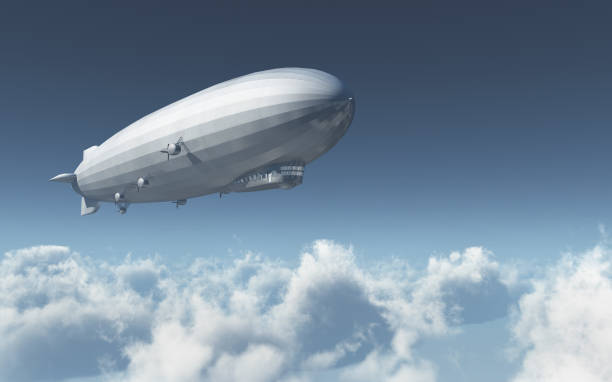Exploring the Resurgence of Zeppelin Travel: A New Era of Airship Adventures
In a world constantly seeking novel ways to traverse the skies, an unexpected contender has risen from the annals of history. Zeppelin travel, once relegated to the realm of vintage photographs and historical documentaries, is experiencing a remarkable resurgence. This article delves into the fascinating world of modern airship adventures, exploring how cutting-edge technology and a renewed interest in sustainable, luxurious travel are breathing new life into this elegant mode of transportation.

A Brief History of Airship Travel
Zeppelins, named after their inventor Count Ferdinand von Zeppelin, first took to the skies in the early 20th century. These massive airships were once seen as the future of air travel, offering a level of comfort and elegance that rivaled ocean liners. However, the infamous Hindenburg disaster in 1937 brought the golden age of zeppelins to an abrupt end. For decades, airships were largely forgotten, relegated to niche uses such as advertising blimps and military surveillance.
Technological Advancements Fueling the Comeback
The revival of zeppelin travel is largely due to significant technological advancements. Modern airships bear little resemblance to their predecessors in terms of safety and efficiency. Today’s zeppelins utilize cutting-edge materials, advanced propulsion systems, and state-of-the-art navigation technology. Helium has replaced the flammable hydrogen of the past, ensuring a much higher level of safety. Additionally, computerized flight control systems and weather prediction tools allow for smoother, more predictable journeys.
Eco-Friendly Travel Takes Flight
One of the most compelling aspects of modern zeppelin travel is its eco-friendly nature. In an era where sustainability is paramount, airships offer a significantly reduced carbon footprint compared to traditional aircraft. Zeppelins consume far less fuel, emit fewer greenhouse gases, and can utilize renewable energy sources such as solar panels to power onboard systems. This alignment with environmental concerns has made zeppelin travel increasingly attractive to eco-conscious travelers and companies looking to reduce their environmental impact.
Luxury Redefined: The Zeppelin Experience
Modern zeppelin journeys are redefining luxury air travel. Unlike the cramped confines of commercial airliners, airships offer spacious cabins with large windows, allowing passengers to enjoy unobstructed views throughout their journey. Many zeppelin operators are outfitting their vessels with high-end amenities such as gourmet dining areas, observation decks, and even private suites. This combination of space, comfort, and panoramic vistas creates a truly unique travel experience that appeals to those seeking something beyond the ordinary.
Unique Travel Opportunities
Zeppelin travel opens up a world of unique travel opportunities. These airships can access remote areas that are difficult to reach by other means, allowing for unparalleled wildlife viewing and landscape photography. Imagine floating over the African savannah, observing herds of elephants from above, or gliding through fjords in Norway, taking in the majestic scenery from a bird’s eye view. Zeppelins are also being utilized for scientific research, offering scientists a stable platform for atmospheric studies and environmental monitoring.
Challenges and Future Prospects
Despite the excitement surrounding the revival of zeppelin travel, challenges remain. The industry is still in its infancy, with limited routes and high operating costs. Weather dependency and the need for specialized infrastructure also pose obstacles. However, as technology continues to advance and demand grows, these challenges are likely to be addressed. The future looks promising, with plans for expanded routes, larger airships, and even the possibility of trans-oceanic zeppelin cruises on the horizon.
Zeppelin Travel Insights
-
Zeppelins can stay airborne for days, allowing for extended, leisurely journeys
-
Modern airships use helium, a non-flammable gas, making them much safer than their historical counterparts
-
Some zeppelins can reach speeds of up to 80 mph, faster than many cruise ships
-
Airships require significantly less fuel than airplanes, using about 3% of the fuel needed for a comparable airplane journey
-
Zeppelin windows can be opened during flight, allowing passengers to experience the air and scents of their surroundings
-
Many zeppelins are equipped with vectored thrust, allowing them to take off and land vertically like a helicopter
As we look to the future of travel, the resurgence of zeppelin journeys offers a tantalizing glimpse into a world where the journey truly is the destination. By combining the romance of a bygone era with cutting-edge technology and a focus on sustainability, airship travel is carving out a unique niche in the modern travel landscape. Whether for luxury tourism, scientific exploration, or eco-friendly transportation, zeppelins are once again taking to the skies, inviting us to experience the world from a new perspective.





